As the 2023 season drew to a close, it would be fair to suggest that the Pohang Steelers were living on cloud nine, securing one of the most memorable seasons in recent club history.
Despite falling agonizingly short in the title race, a second-place finish to go along with Korean Cup silverware meant that supporters were left optimistic and excited heading into 2024.
However, the good times have failed to last since being crowned champions in 2013, with Pohang succumbing to another off-season riddled with key outgoings for both the playing and coaching staff.
With fan-favourite Kim Gi-dong heading over to become the FC Seoul manager before the upcoming season, Pohang needed a worthy replacement to raise club spirits and maintain their impressive form.
And who better to recruit than Park Tae-ha, who embodies Pohang Steelers in every sense- with the one-club man now leading his team from the sidelines.
Even though the Pohang Steelers maintain the third lowest market value in the K-League 1 (€9.55m), Park Tae-ha has reinvigorated and repaired a squad who were shaken by the loss of their previous manager, with the Steelers sat atop the division after 24 matches.
His implementation of a new style of football has matched the flair and innovation that Pohang has been associated with in recent times.
This tactical analysis will begin to break down how the Pohang Steelers have been effective on both sides of the ball, overcoming early struggles to cement themselves as a genuine title contender.
Our analysis will aim to highlight how Park Tae-ha’s tactics have allowed his side to be clinical and efficient in all areas of the pitch.
Steelers’ New Style
Under Kim Gi-dong, the Pohang Steelers had excelled in producing quick attacking sequences that emphasised rapid short passing.
Unsurprisingly, the loss of what the fans had coined ‘Steel-ki taka’ football left many wondering how the team would fare with a new manager and a squad incredibly familiar with the 4-4-2 and 4-2-3-1.
Well, Park Tae-ha has brought along his own variation of the 4-4-2, providing an element of comfortability during a hugely important transitional phase.
Despite the similar starting roles, the new-look Pohang Steelers have been drilled on completing long passes to bypass the centre of midfield, focusing on the aerial abilities of their striking partnership.
We have also seen Pohang transition into a 3-4-3 at times, allowing their wingers to stretch the pitch and increase their numerical superiority in wide areas when the wingbacks can offer important overlapping and underlapping runs.
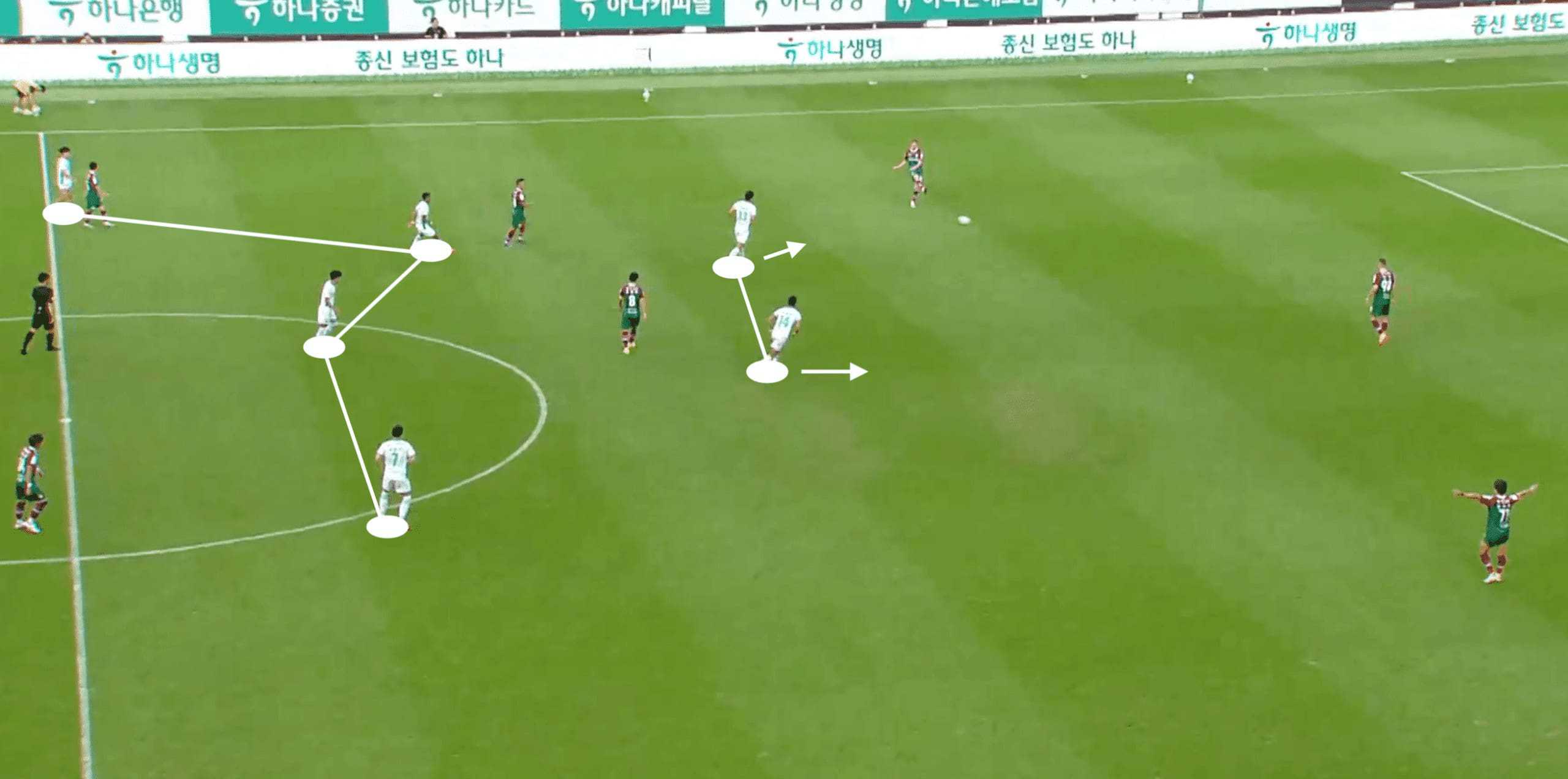
Data Analysis
When looking at the underlying statistics so far in the K-League 1, it is clear why many are worried about the Steelers’ ability to produce magic in the key moments.
One of their biggest failures in the last campaign was their inability to get over the line in close matches. Their season featured gut-wrenching draws, and they missed out on crucial points when it came to crunch time.
This season’s statistics would highlight Pohang’s consistency in front of goal, undeterred by having just the 4th lowest expected goals figure in the division (31.68xG).
Scoring 38 actual goals from such a figure represents a clear overachievement, which many would suggest is unsustainable, but it also conveys the potential maturity gained from competing under similar pressure for the majority of last season.
Despite some teething problems in the early moments of Park Tae-ha’s tenure, Pohang appears to have grown nicely into his tactical system.
Examining their chance creation statistics for this season, Pohang leads the league in through balls per 90 (5.7), key passes per 90 (3.18), long passes per 90 (44.09) and even smart passing accuracy with 52.3%.
Now, whilst this does not necessarily indicate how effective Pohang are at breaking the lines and putting their passing sequences to use, it does shed important light on just how quickly they have been able to adapt and build upon their old style of distribution.
Attacking Phase
After learning about Pohang’s successes when reviewing the league data, it is essential to visualise their positions on the field, which truly displays just how versatile they are in their individual positioning.
Their 4-4-2 looks like more of a 3-2-5 when looking to attack, with Kwang-hoon Shin moving inside from right back to form their three-man defence.
He possesses impressive versatility to play on either flank and the technical ability to match his manager’s style when playing out from defence.
The Pohang right back leads the league in long passes per 90 (12.7), often breaking the defensive line with long balls through the right channel or dropped into the target strikers.

Oberdan and Jeong-Won Eo form a high-energy midfield partnership, with the mobility to drop deeper to collect and offer their presence in the wider areas.
Oberdan has been a mainstay across his time in Pohang, with the Brazilian boasting an impressive 80.78% forward passing accuracy.
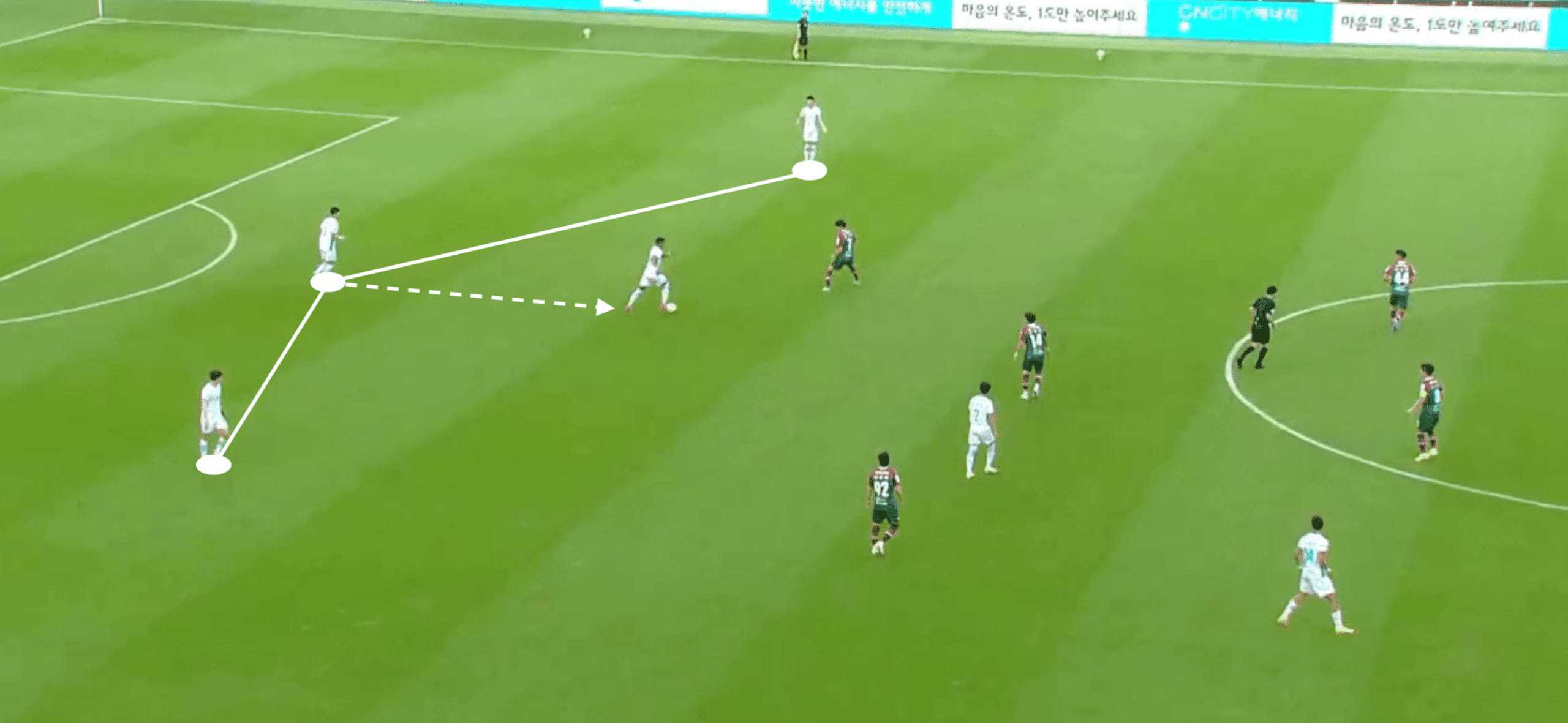
In the final third, the strike partnership of Yong-Joon Heo and Ho-Jae Lee have excelled all season in winning their aerial duels and springboarding fast attacking transitions, with the former often seen dropping into the midfield as more of an effective distributor.
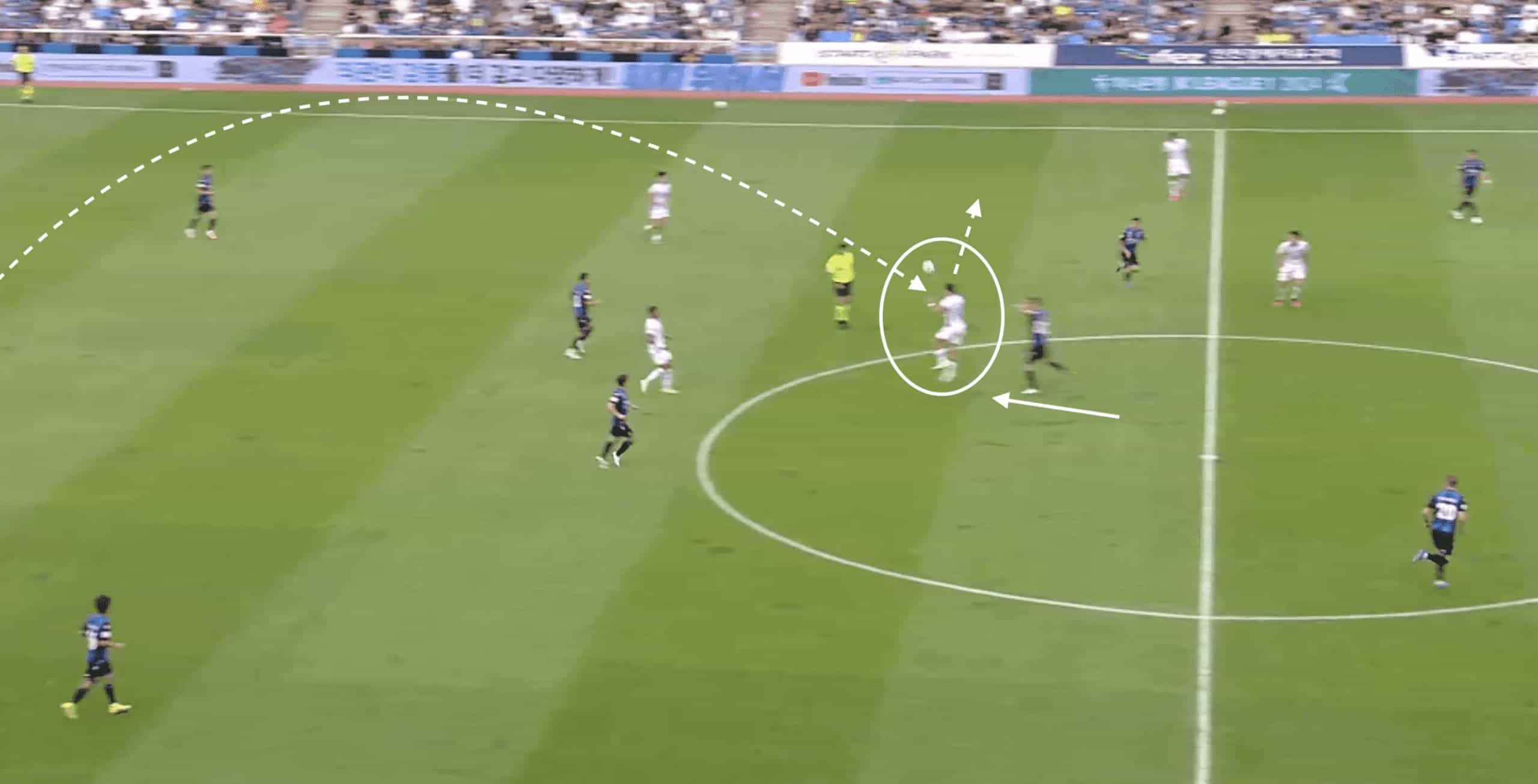
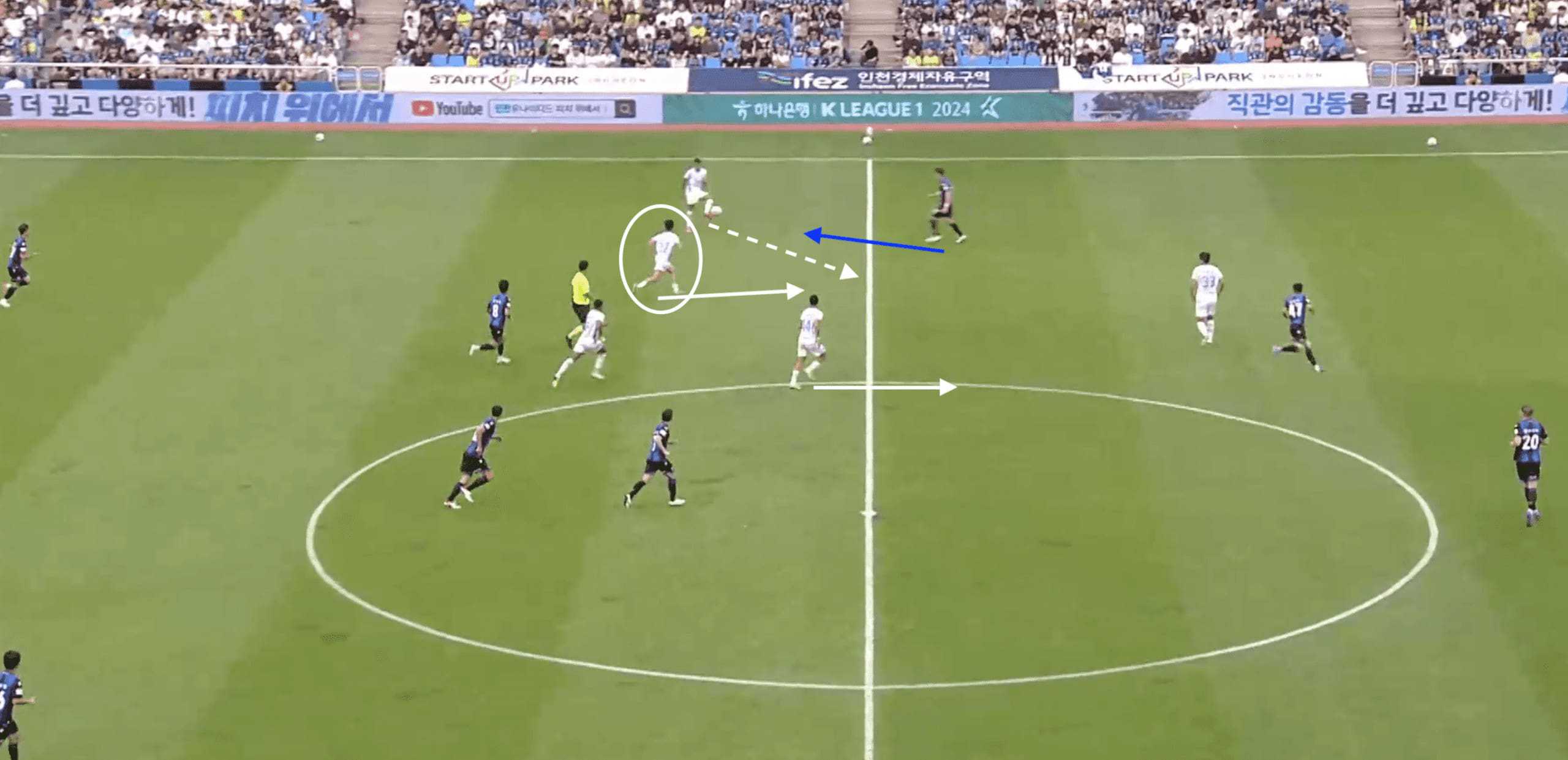
In-Sung Kim is often positioned wide on the right flank, but with one of the strikers vacating their central position to play between the lines, Yun-Sang Hong often inverts from the left flank to offer his creative profile in the left half-space.
This leaves Wanderson as Pohang’s fifth attacking presence in the final third, having a free role at left back to bomb forward and influence play, with Yun-Sang Hong often attracting the majority of the defensive attention.
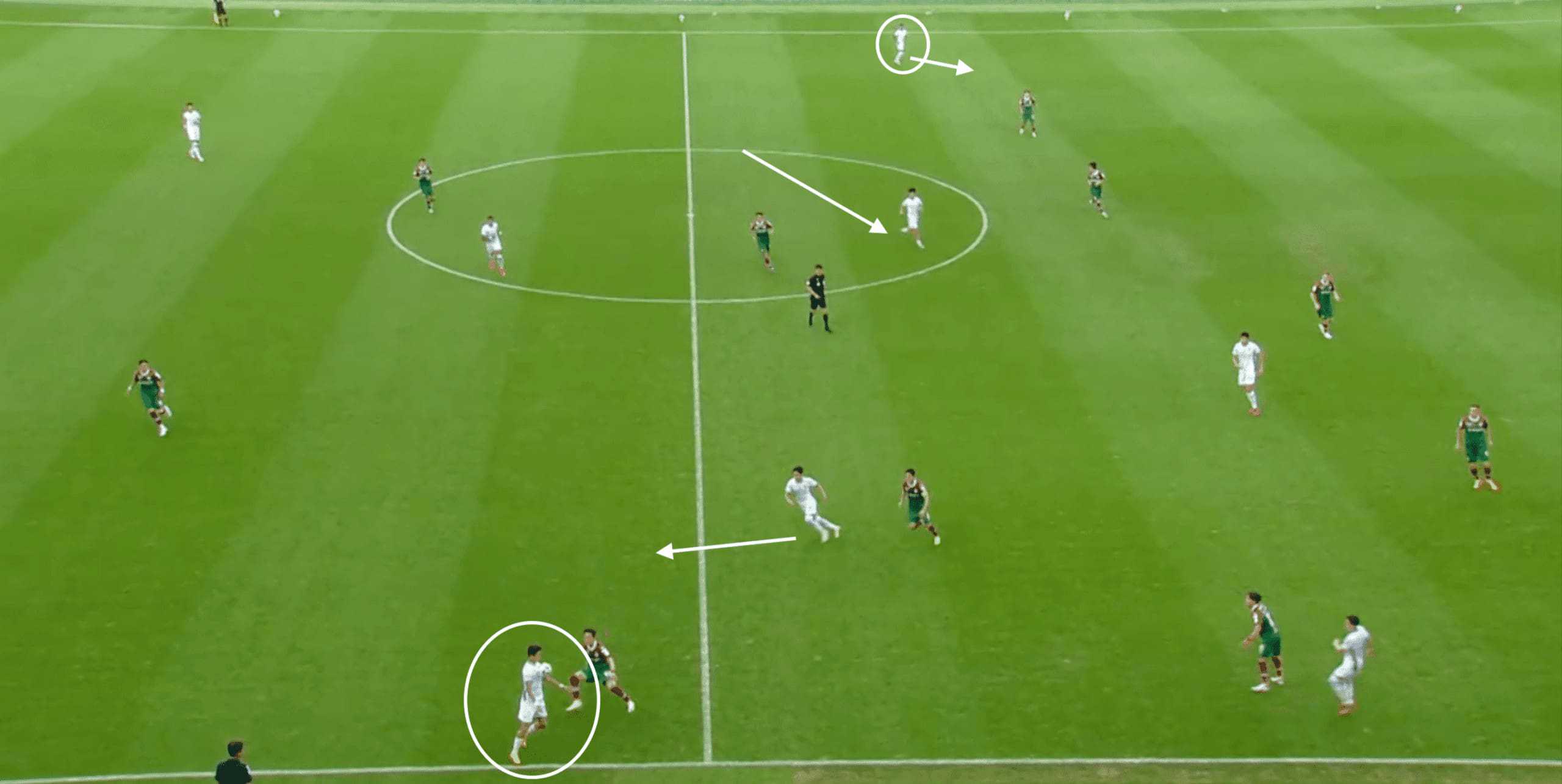
One reason they have been so successful thus far is their manager’s ability to pivot from their instilled principles and target different methods of attack to change the game.
This was evident in Pohang’s home opener against Daegu FC, a game in which Park Tae-ha’s team trailed heading into halftime, with their method of crossing from the wide areas being stifled by the opposition defence.
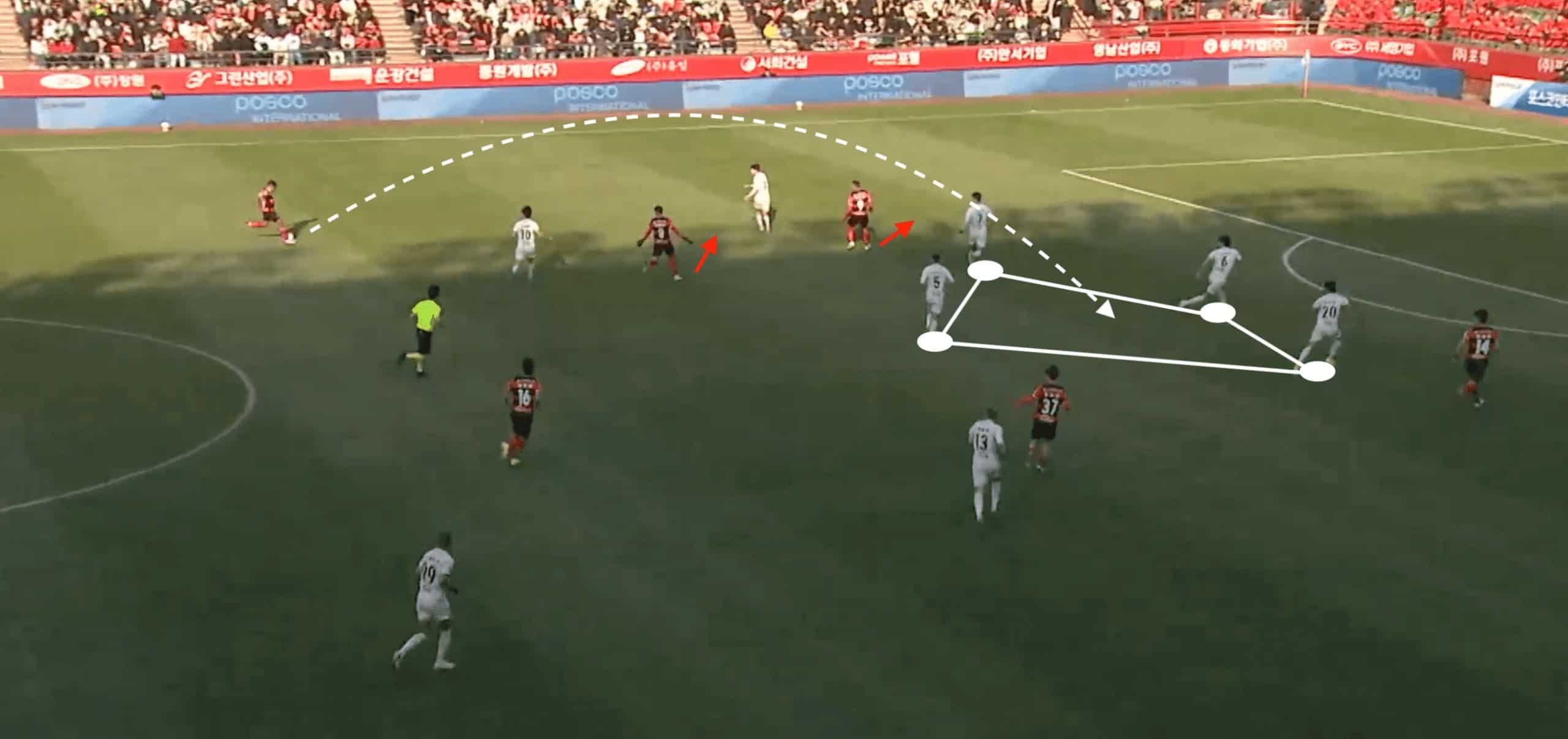
Park Tae-ha was able to switch to a more familiar 4-2-3-1 after the break, a decision that benefitted Jorge Teixeira’s attacking play when he was in closer proximity to a more creative attacking midfielder behind him.
The alteration allowed the Pohang Steelers to dominate possession and emerge winners in a 3-1 victory, marking the start of a new era under Park Tae-ha.
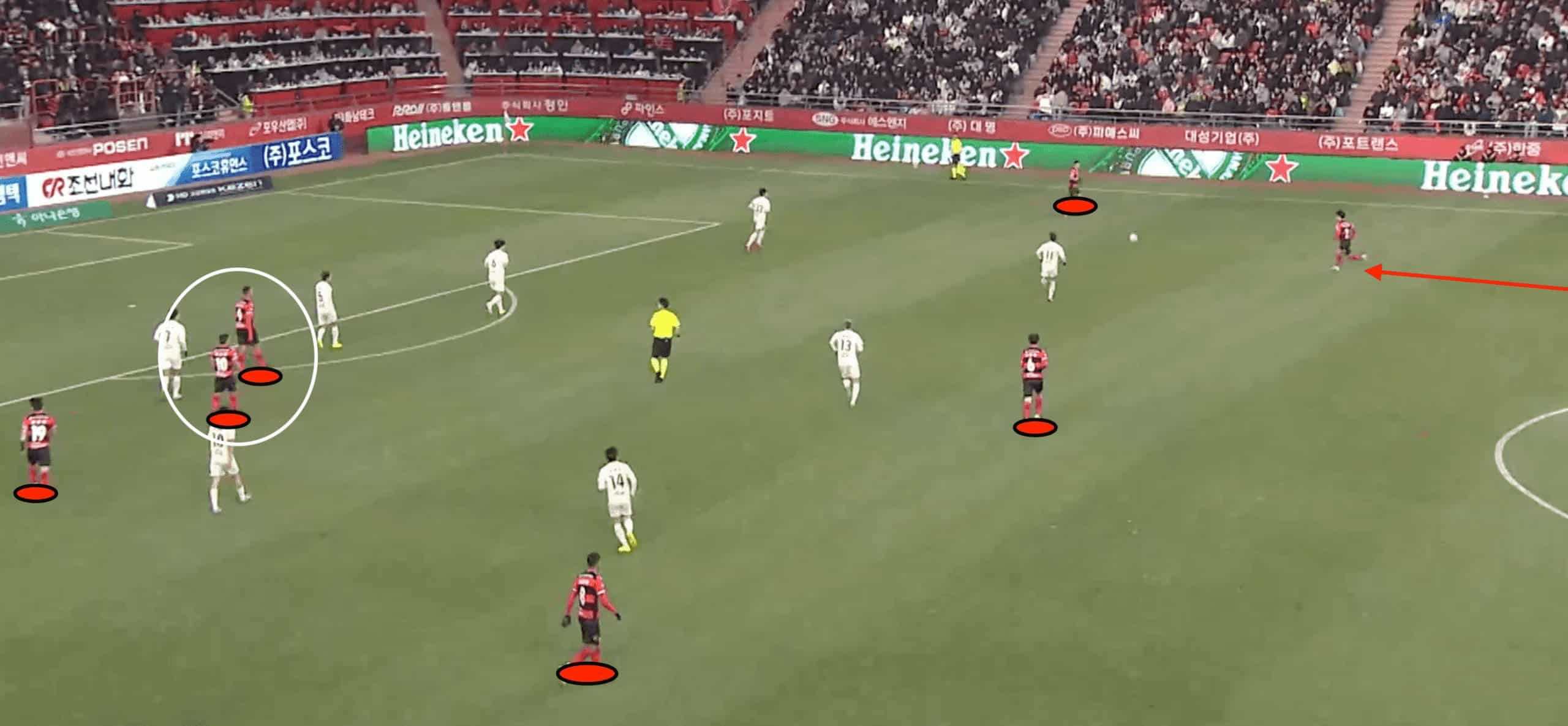
Defensive Phase
When it comes to defending, we must start by addressing how the Pohang Steelers have done in the pressing game so far this season.
A PPDA score of 13.25 coupled with the lowest challenge intensity in the league (4.3) may not be what you would expect from a side at the top of the league.
However, Park Tae-ha’s team begin to press in their 4-4-2 setup with lower intensity but works exceptionally hard to deny any opposition progression up the pitch, with their midfield and defensive lines remaining quite compact to deny any easy through balls.
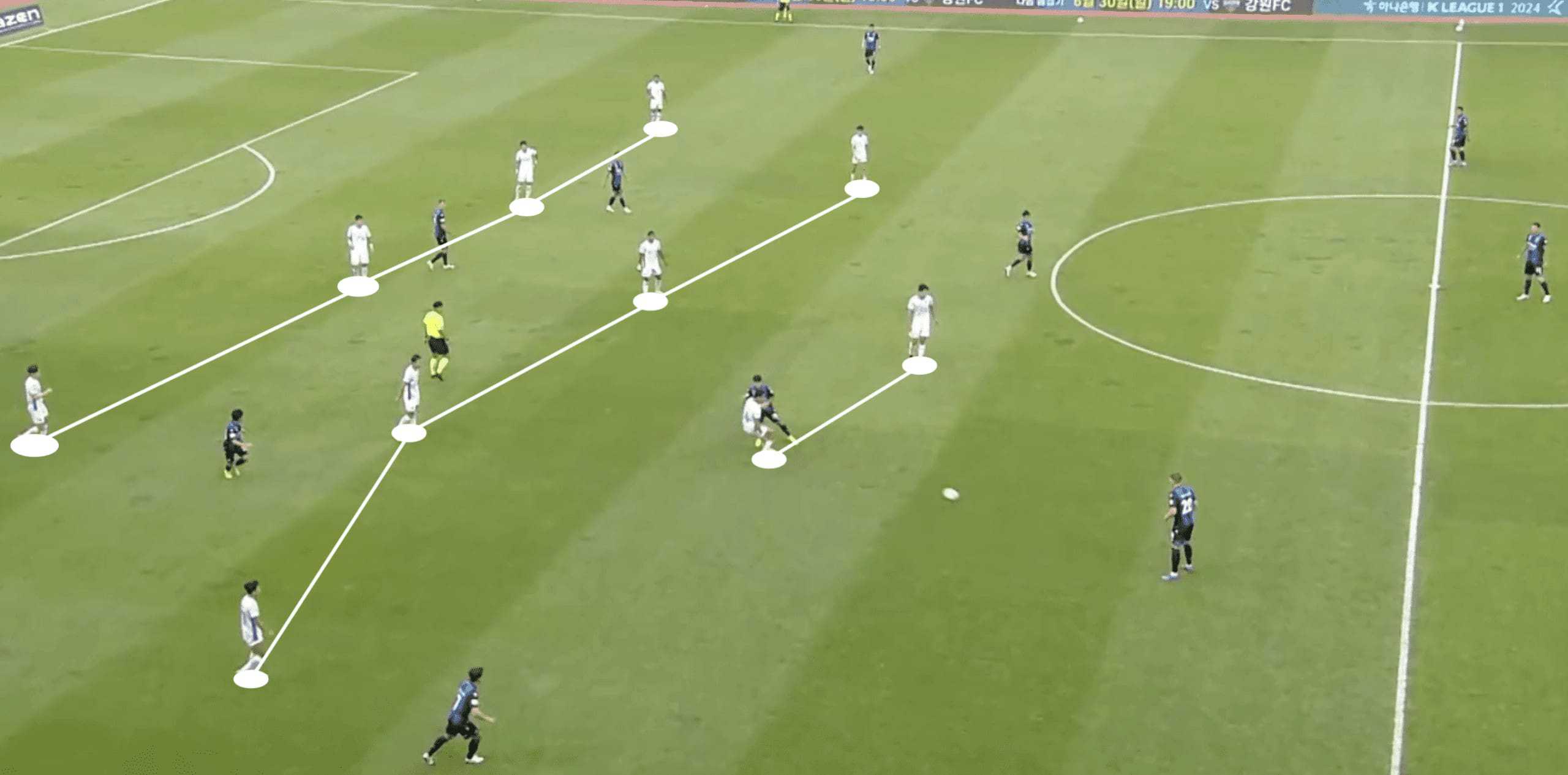
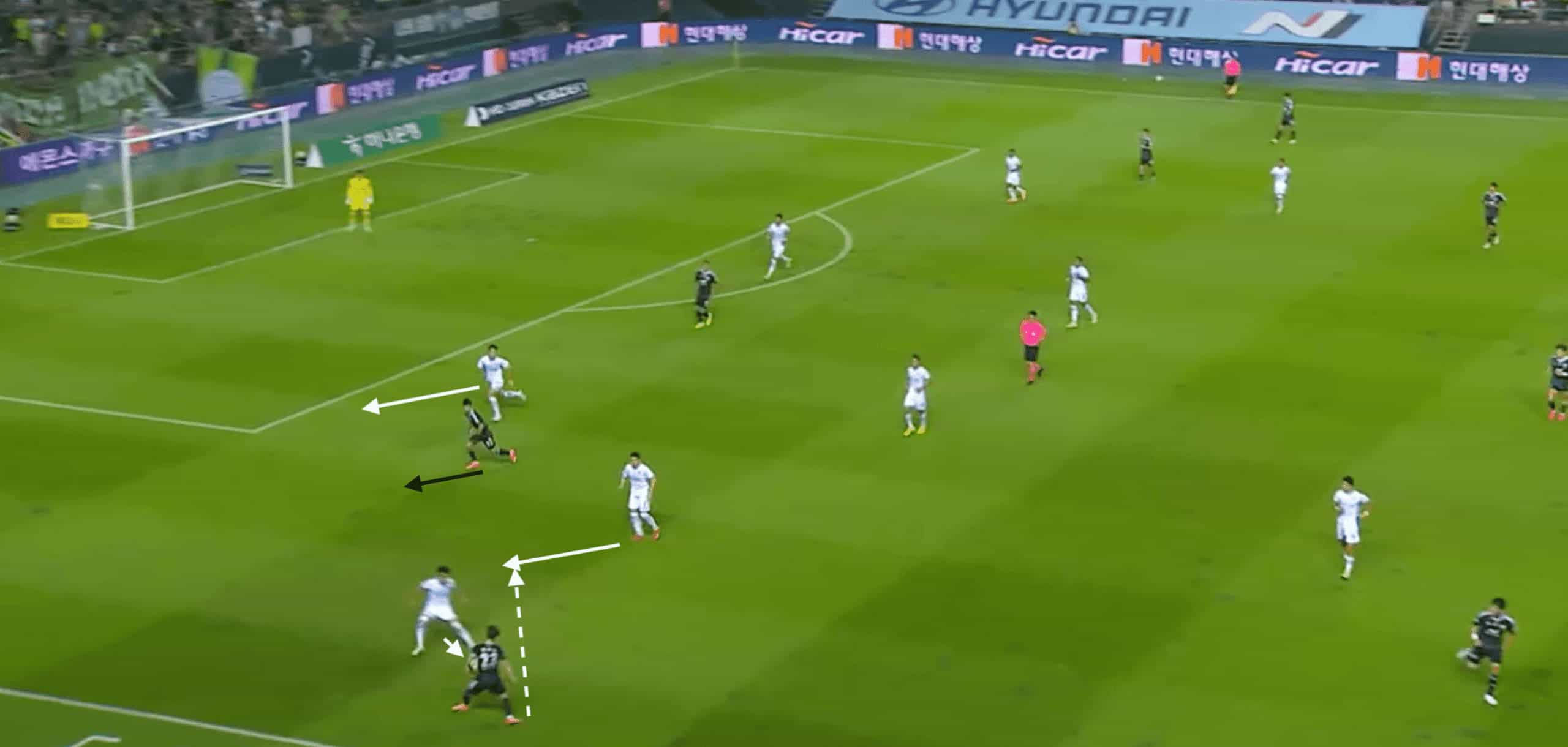
Pohang have shown glimpses where their patient-pressing approach has resulted in excellent opportunities to attack on the counter, utilising their wide players’ speed and dribbling ability with explosive build-up from the point of their interception or ball recovery.
Even though they may provide their opposition with an extra level of freedom to build out from defence initially, Pohang ranks second in the K-League for defensive duel win rate with 65.8%– indicating the fact they can recognise the most opportune times to be combative.

Much like their expected goals for, Pohang have appeared to overachieve at the back, considering the fact that they have only conceded 25 goals from 30.82 xGA.
Along with the Steelers also facing the third most shots per 90 in the K-League (10.88), it may come as a surprise that Pohang have been so solid this season.
It boils down to the fact that their consolidated formation often forces the opposition into low-chance shooting opportunities, minimising the potential threat that In-Jae Hwang faces between the sticks.
This can be quantified by Pohang’s xG per shot faced, which currently stands as the lowest in the division (0.105).
His sweeping abilities are also crucial when facing balls played over the top of their defensive line, with the keeper prone to emerging off his line to shorten the optimal striking window.
Conclusion
Despite his club legend stature throughout his playing days, Park Tae-ha’s appointment certainly initiated fierce discussion amongst fans of Korean football—with many wondering if he was the right manager to succeed Kim Gi-dong.
However, the Pohang manager has certainly silenced his doubters when observing the way they have performed so far, with attacking innovation supported by the emergence of a resolute defensive shape.
There were big shoes to fill for Park Tae-ha, but a man who spoke so highly of the club and truly understood the importance of his new role was always going to capture the hearts of the Marines.
After coming so close last year, it will be captivating to see whether one of Korean football’s sleeping giants can finally secure the ultimate prize under the tutelage of their new manager.





Comments